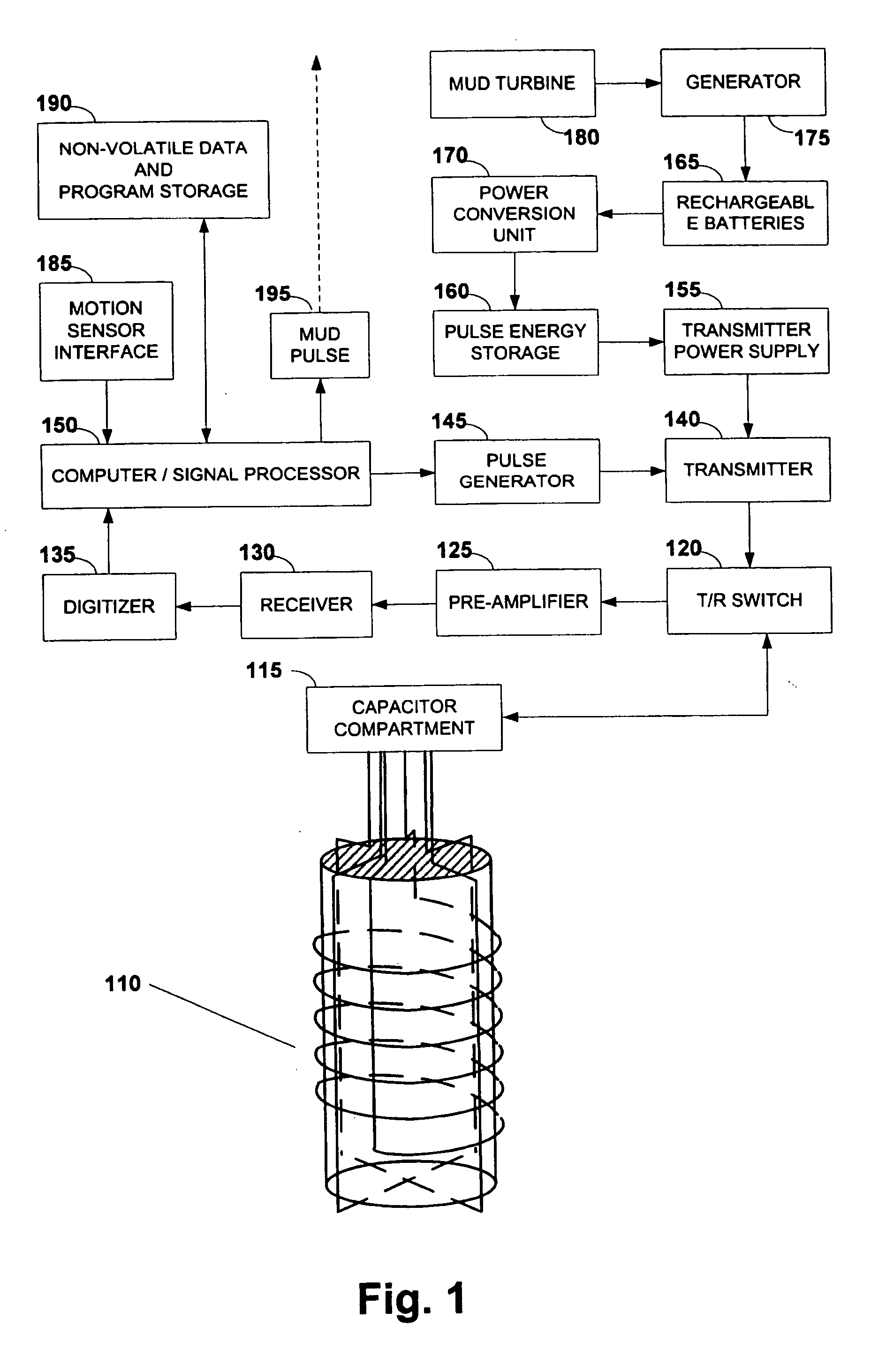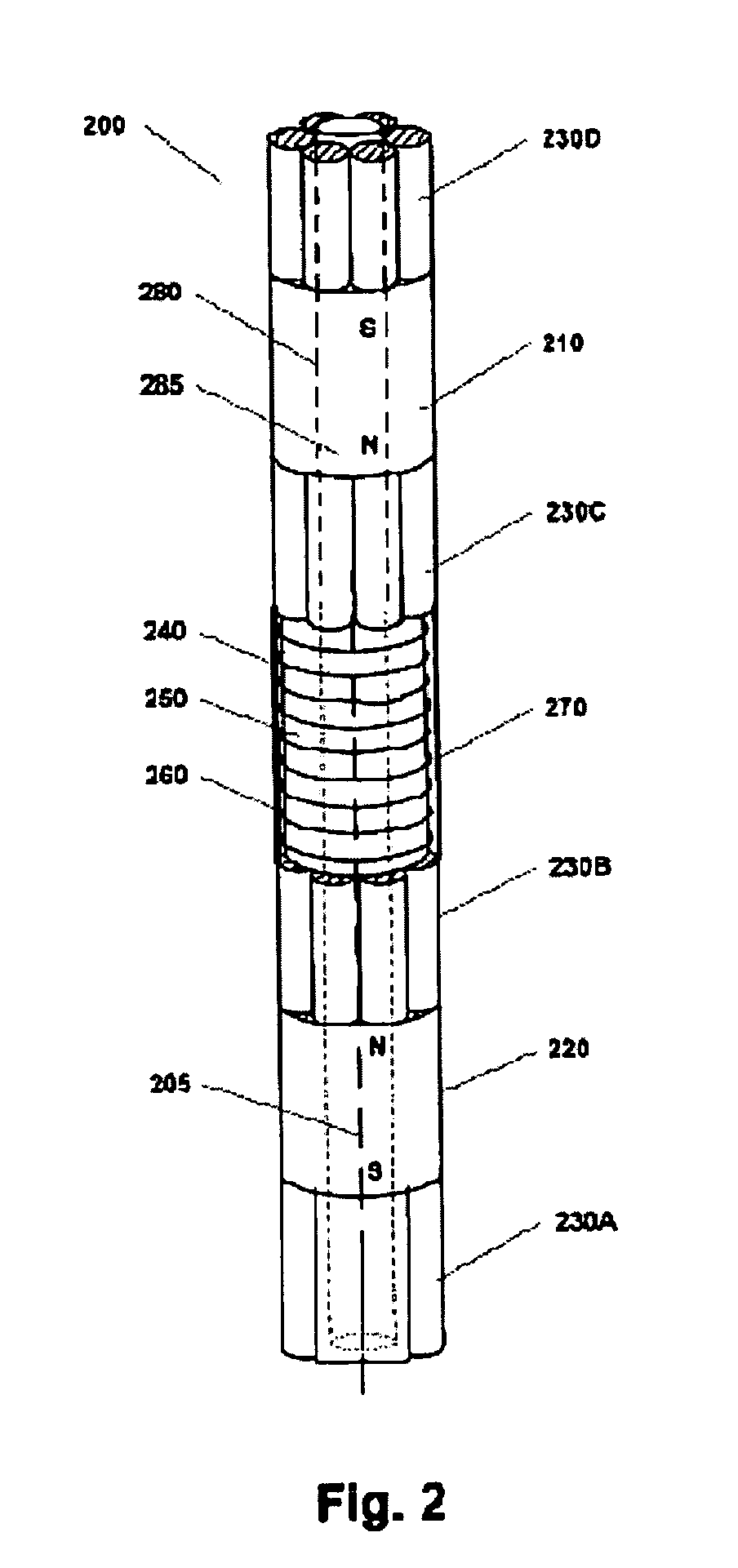Systems and methods for NMR logging
a technology of nmr and logging, applied in the field of nmr measurements, can solve the problems of induced signal decay, present generation of nmr tools, shallow depth of investigation, etc., and achieve the effects of improving the quality of deep nmr measurements, reducing power requirements, and improving the signal-to-noise ratio (snr) results
- Summary
- Abstract
- Description
- Claims
- Application Information
AI Technical Summary
Benefits of technology
Problems solved by technology
Method used
Image
Examples
first embodiment
Antenna Assembly in the First Embodiment
(1) Yoke
In accordance with a one embodiment, the proximal ends of the inner pole pieces 230 are attached to a yoke (not shown). The yoke may have cylindrical shape with its longitudinal axis aligned in coincidence with the axis of the tool 100. Preferably, pole pieces 230 are not joined rigidly with the yoke, but can move some against each other to provide overall bending flexibility. Because the yoke is interposed between the inner pole pieces of magnets 210 and 220, the entire magnetic assembly is symmetric around the yoke. The length of the yoke is preferably about 80 cm. Thus, the length of the entire magnetic assembly in this embodiment is about 315 cm. In general, the yoke may provide support for RF transceiver antenna 240, as described next. The yoke is preferably made of a mechanically durable soft-magnetic material.
(2) Antenna Core
With reference to FIG. 2, in accordance with a preferred embodiment, magnetic assembly 200 further...
PUM
 Login to View More
Login to View More Abstract
Description
Claims
Application Information
 Login to View More
Login to View More - R&D
- Intellectual Property
- Life Sciences
- Materials
- Tech Scout
- Unparalleled Data Quality
- Higher Quality Content
- 60% Fewer Hallucinations
Browse by: Latest US Patents, China's latest patents, Technical Efficacy Thesaurus, Application Domain, Technology Topic, Popular Technical Reports.
© 2025 PatSnap. All rights reserved.Legal|Privacy policy|Modern Slavery Act Transparency Statement|Sitemap|About US| Contact US: help@patsnap.com



